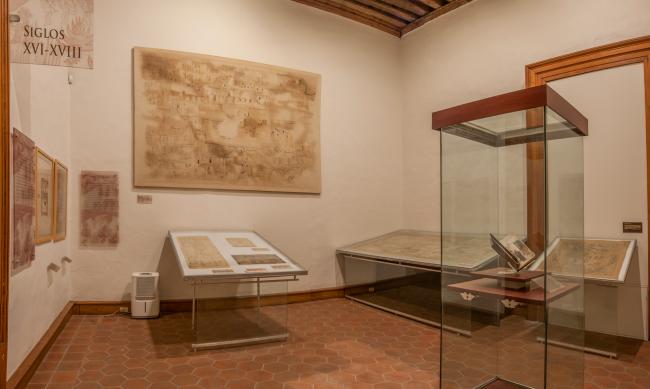
Codices, 16th–18th centuries
Sala
This exhibit displays original and reproduced codices and painted cloths from various Indigenous communities across the territory of Michoacán.
Codices: Testimonies of Indigenous Oral Tradition
Mesoamerican Indigenous peoples developed a sophisticated tradition of pictographic writing. Each image or pictogram represented a meaning, action, name, place, date, or number, preserving orally transmitted knowledge on amate paper, cloth, or leather. One of the primary purposes of codices and painted cloths was to record the historical and religious events of a community, legitimizing the authority of its leaders and their territorial rights.
With the arrival of the Spanish, the pictographic tradition persisted. Although no pre-Hispanic codices or cloths have been found in Michoacán, some documents from the colonial period have survived. These clearly show Western influence, both in technique and in the incorporation of European iconography and Latin-script glosses added by Purépecha scribes and painters known as carariecha.
Each document responded to specific needs and intentions. They depicted foundational stories, migrations, customs, rituals, sociopolitical structures, lineages, territorial jurisdictions, maps, and tax systems. Since codices and cloths were only reminders of orally conveyed information, they have been interpreted in various ways over the centuries. Much of their original meaning was lost with their authors, who were the keepers of the histories and traditions they illustrated.


